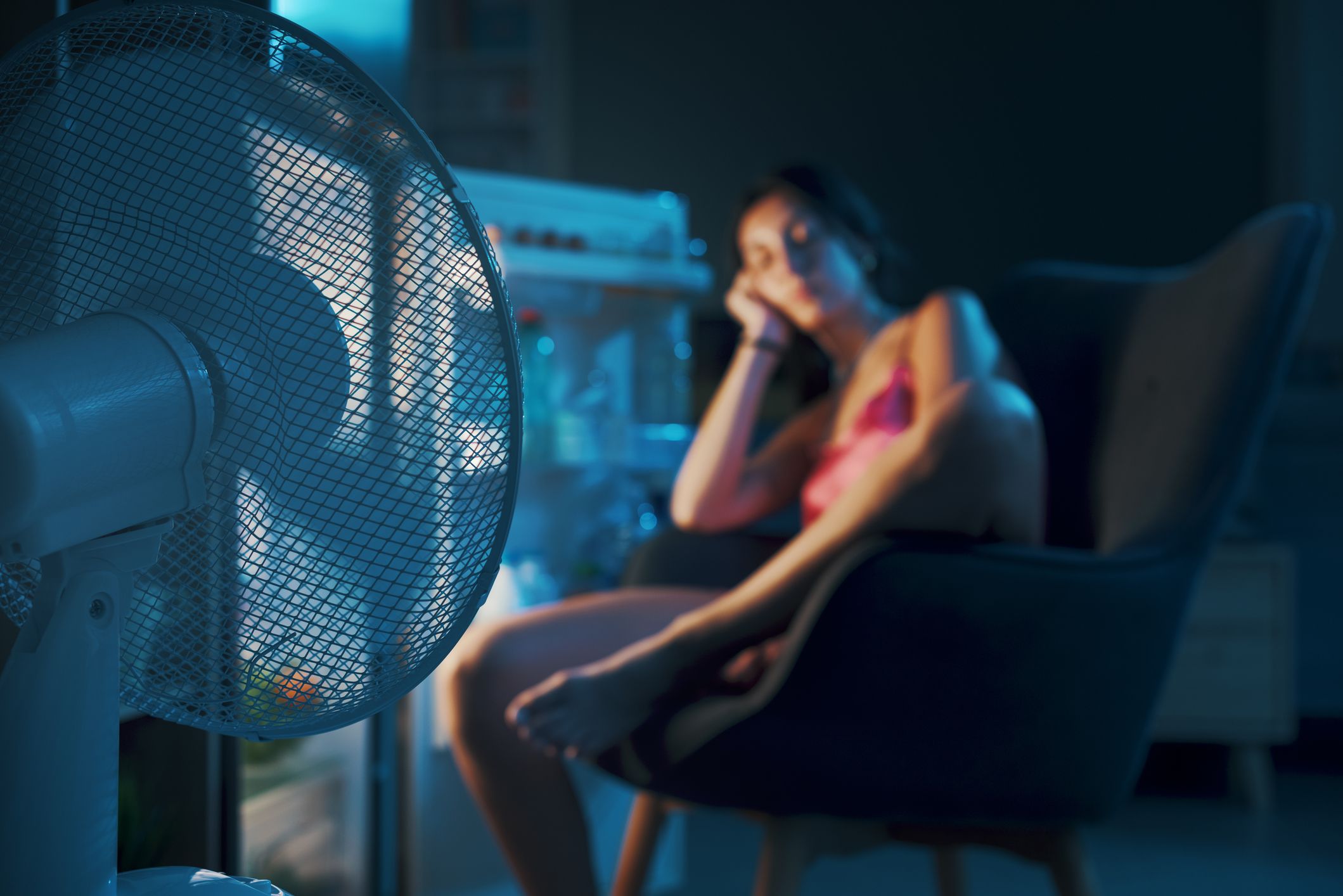Updated on December 27, 2023
Most people who experience perimenopause (also called menopausal transition) will experience vasomotor symptoms (VMS). Commonly known as hot flashes, VMS are sudden episodes of intense warmth or heat, followed by sweating. These sensations occur on the upper body, usually on the face, neck, and chest. Night sweats are hot flashes that occur during sleep.
While perimenopause is a natural and normal part of aging, VMS episodes can be intense, uncomfortable, and highly disruptive to a person’s life. This includes work.
Here, we look at some strategies that may make a workday with VMS more manageable. We also look at some of the important reasons anyone experiencing VMS should talk to a healthcare provider about their symptoms.
Talk to a healthcare provider about treatment
If VMS are affecting your quality of life—at work or outside of work—the number one thing you can do is see your healthcare provider. There are treatments that can help a person manage VMS. Treatment options include hormone replacement therapy as well as several non-hormonal medications. A healthcare provider will be your best source of information about the different treatment options available and how to decide on a treatment option.
Strategies for managing VMS at work
In addition to medications, there are also non-medication approaches that may help a person manage VMS. These approaches should not be thought of as a substitute for working with a healthcare provider, but they may help make VMS more manageable during a workday.
Be prepared
Use these strategies to help avoid VMS episodes at work—and to be prepared when a VMS episode occurs:
- Wear VMS-friendly attire. Becoming too warm can trigger a hot flash. Wear breathable fabrics and dress in layers that can easily be removed if you need to cool down. Adding back a layer can also help if you experience chills following a hot flash. Cotton is a good example of a breathable fabric, while wool is an example of a fabric that traps heat.
- Have tools to cool down. Pack a small portable fan or a misting spray to cool down when you start to feel too warm. These can also help you cool down and feel more comfortable if you experience a hot flash. If you have access to a refrigerator at work, consider keeping a cool pack on hand.
- Cold water can also help. Also consider keeping a bottle of cold water to sip on if you need to cool down. Staying hydrated in general is also a good strategy for overall health.
- Have an emergency kit. Keep a kit with a few essentials in case you need to freshen up after a hot flash. A kit can include things like deodorant, face wash, over-the-counter pain relievers, makeup, hair product, menstrual products, and extra clothing.
It’s also important to recognize and avoid VMS triggers in the workplace (or at gatherings with coworkers). Common triggers include tobacco smoke, hot drinks, caffeine, alcohol, and spicy foods.
Find places to cool off
In an ideal world, you would always have access to the thermostat for your workplace. In reality, the temperature at work will often be an uncontrollable factor. VMS affects people who work many different types of jobs in many different work environments. One strategy you can use—finding a place to cool off when you need a break. This may be a cooler section of an office, finding some shade if your workplace is outdoors, or a storage room if you work in a store or restaurant.
Find strategies to reduce stress
Work can be stressful, and stress may trigger VMS episodes. Try finding a go-to strategy to de-stress at work. This may be talking to a coworker who is a friend, listening to relaxing music, practicing a breathing exercise, or mindfulness meditation.
Find people to talk to
Perimenopause and VMS come with numerous challenges, at work and outside of work, and it helps to have people to talk to. This may be a friend or a loved one you can have an honest conversation with. There are also support groups and online communities where you can connect with other people who are also experiencing perimenopause—which can be great opportunities to exchange ideas and find people who know what the experience can be like.






